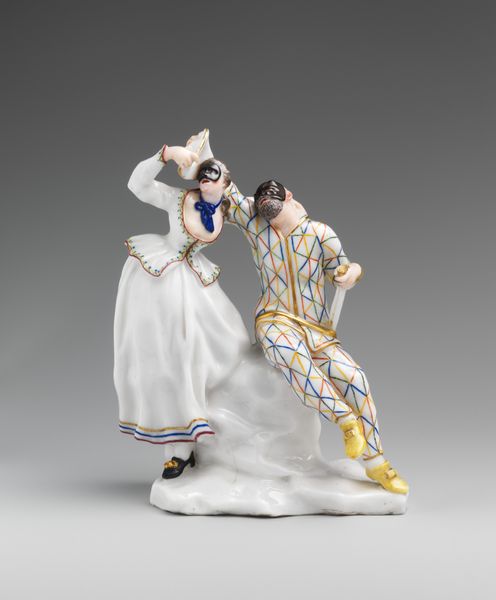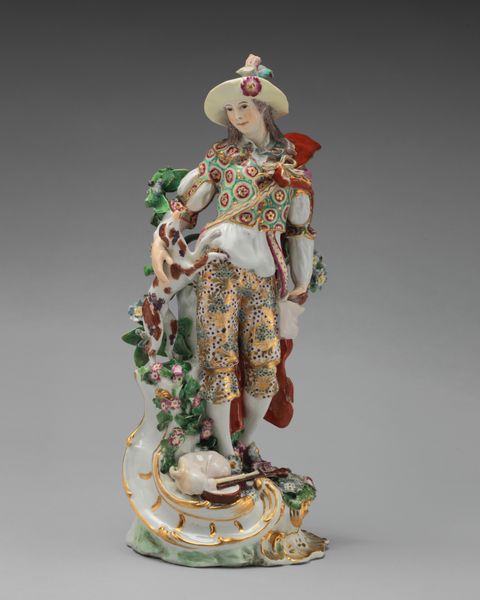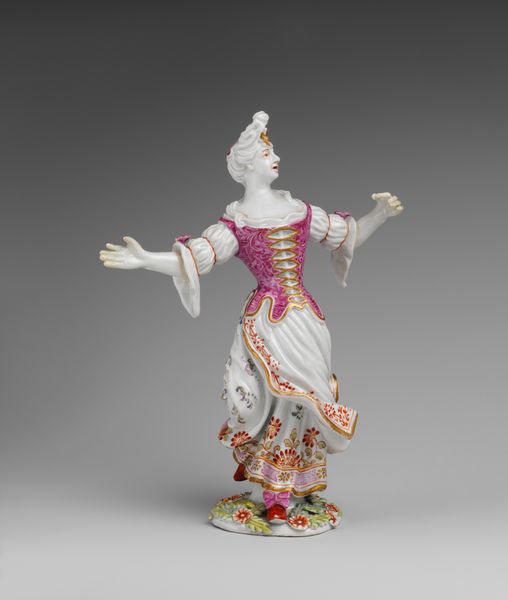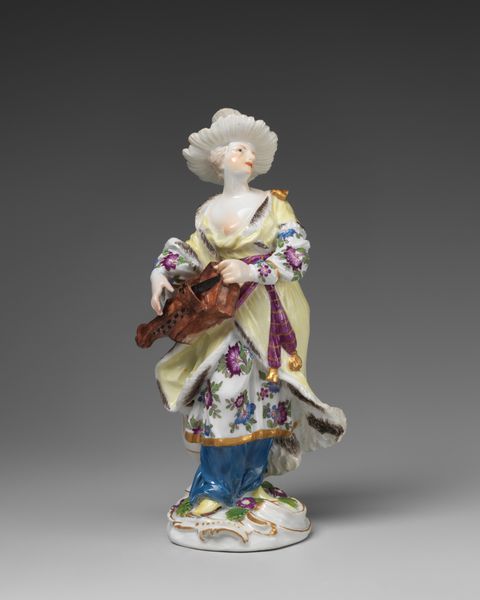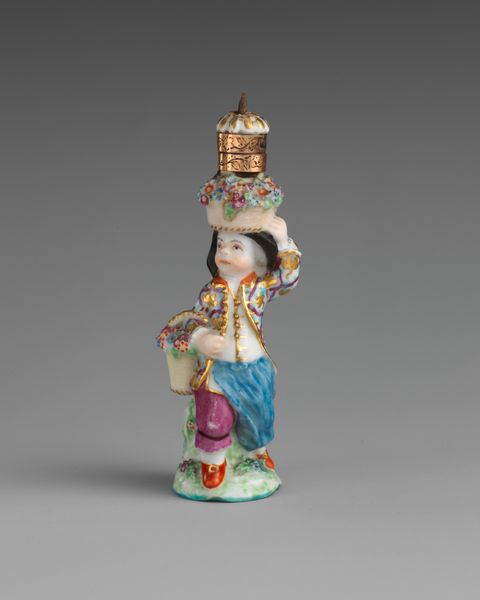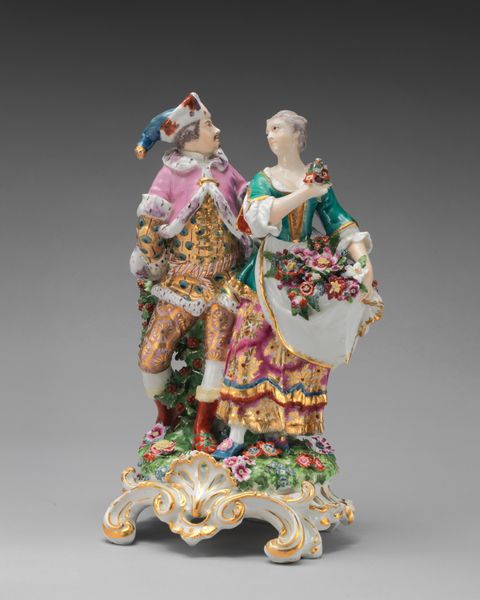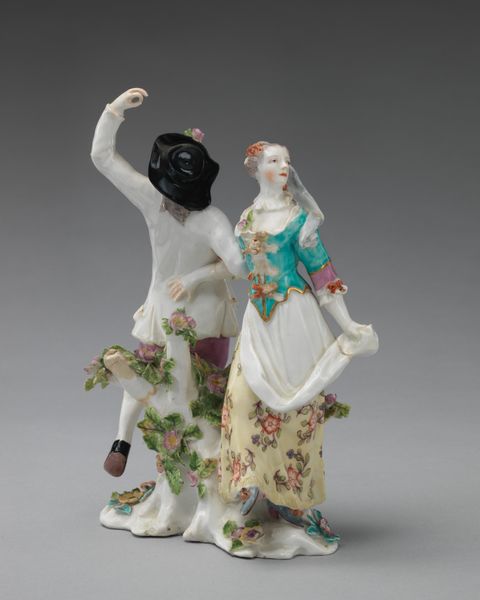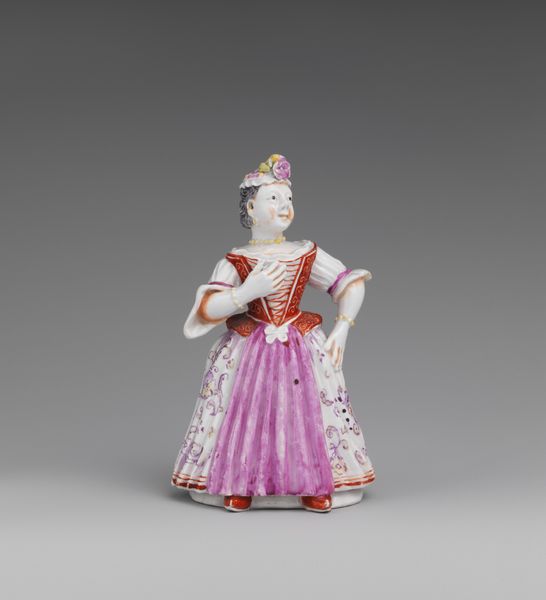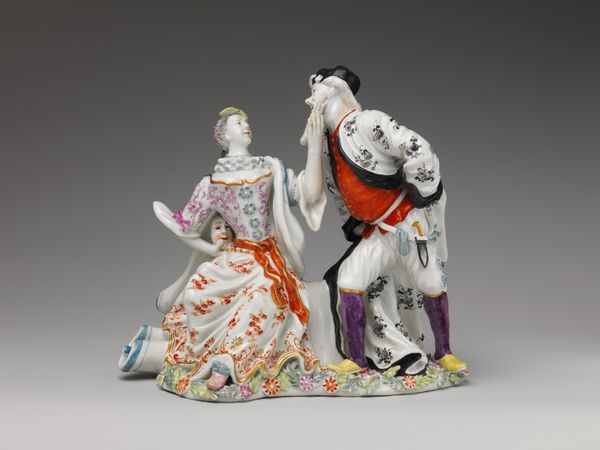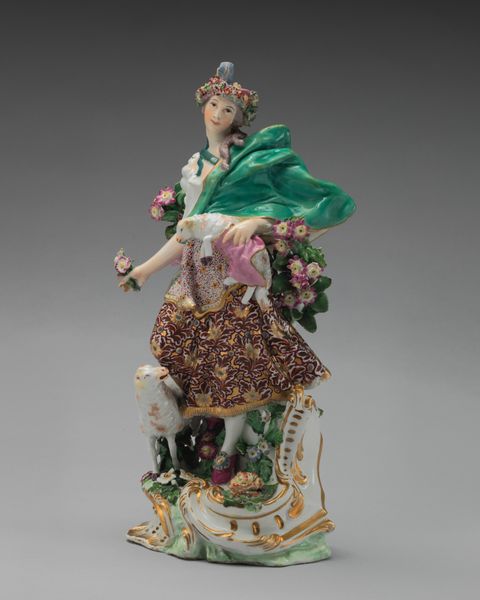
ceramic, porcelain, sculpture
#
ceramic
#
porcelain
#
figuration
#
sculpture
#
men
#
decorative-art
#
rococo
Dimensions: 7 × 5 3/4 in. (17.8 × 14.6 cm)
Copyright: Public Domain
Curator: Here we have "Dutch Dancers," a porcelain sculpture crafted by the Chelsea Porcelain Manufactory, likely sometime between 1750 and 1760. Editor: Immediately striking! The dynamism captured in this frozen ceramic—the lift of the leg, the turn of the body—it's captivating. It feels theatrical, almost playful. Curator: Absolutely. Think about the context: porcelain production in the 18th century was laborious. Each figure meticulously crafted, molded, fired, and painted. The very material speaks of status, luxury, and the intense efforts involved. Editor: And that luxury was built, in part, on the exploitation of labor both at home and abroad. These dancers, presented as an object of decor, deflect attention from the social realities of production. What are these 'Dutch Dancers' meant to signify? Is it a romanticized view of the rural, or simply an exotic object for a wealthy collector? Curator: Perhaps a bit of both. These figurines often drew inspiration from popular theatre or courtly entertainments. It served as aspirational objects, small markers of refined taste accessible to a specific clientele who wanted to possess not just art but an engagement in cultural life. The fact that it is porcelain further speaks to wealth and status in a period where manufacturing techniques were heavily guarded. Editor: It makes you think about who is being represented, and by whom. A black mask obscures the man’s face. There are also stereotypical designators embedded within what’s perceived as playful, innocuous ornament: class, cultural appropriation and masquerade all become entwined within this object. It definitely serves a purpose beyond mere aesthetics. Curator: I agree completely. We see here an intriguing intersection of artistic skill, material value, and social commentary embedded within the crafting process. Editor: Ultimately, the ‘Dutch Dancers’ invite us to consider not just the artistry and elegance of Rococo design, but the power dynamics inherent in art, consumption and cultural representation itself.
Comments
No comments
Be the first to comment and join the conversation on the ultimate creative platform.


